Prep
Week 7, Term 2

Prep
Week 7, Term 2
INFORMATION
🎒Kiss and Drop
Thank you for supporting your child’s resilience and bravery by promoting independence as they walk in on their own. It’s wonderful to see our students starting their day with confidence, setting themselves up for a positive, calm, and focused start to learning.
Now that we’ve seen how capable our students are, we feel confident that they can continue to do this independently each day.
📸 Family Photo on iPad
We would love your help in finding or taking a family photo for your child to have on their iPad. We’ll be using this photo as part of our writing activities, linked to our Mentor Text, on Thursday and Friday this week.
The photo can include pets too!
🐻🧺 Teddy Bears' Picnic: Wednesday 11th June!
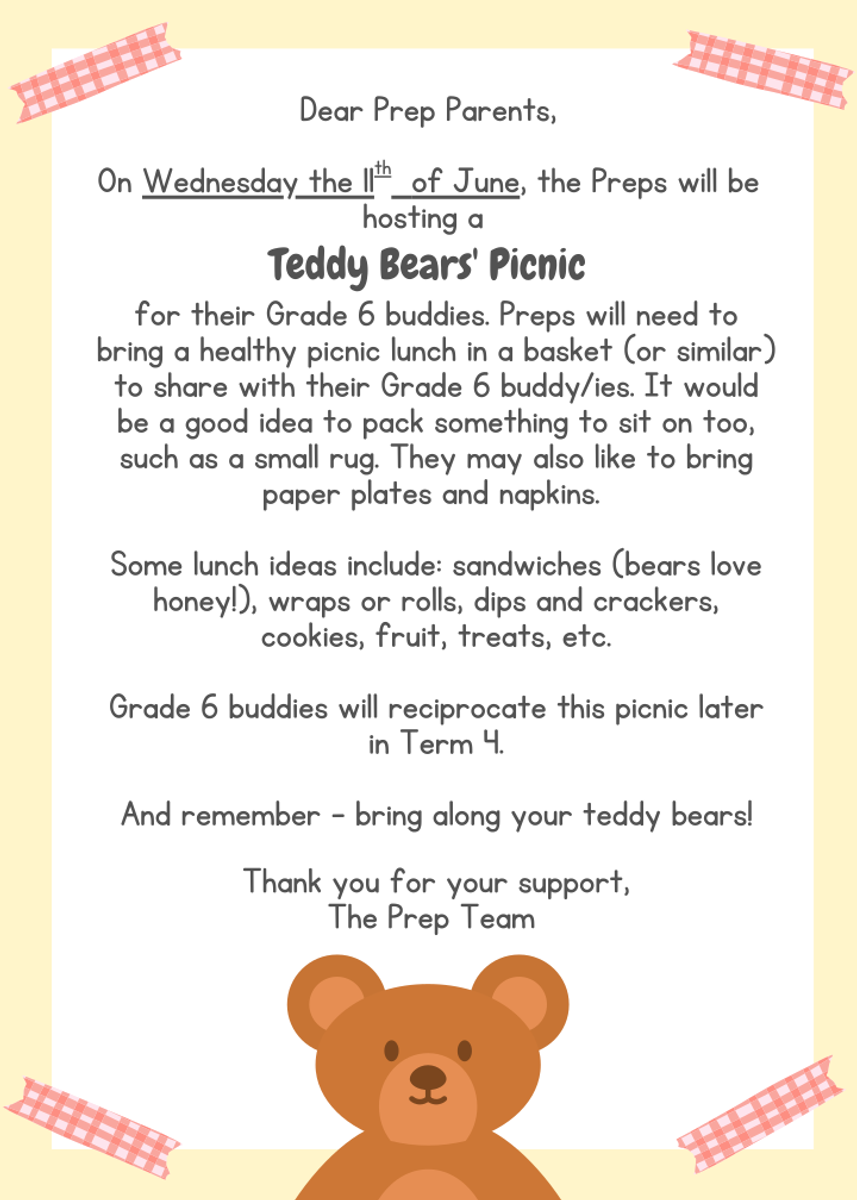

🗣️ Show and Share
Topic: A Special Family Recipe
-Please upload your recipe as an image (eg. photo, PDF) to Showbie and we will add it to our class recipe book!!!
_You will find the folder at Showbie → Prep A/B/C 2025 → Term 2 Learning →Show & Share: Family Recipe
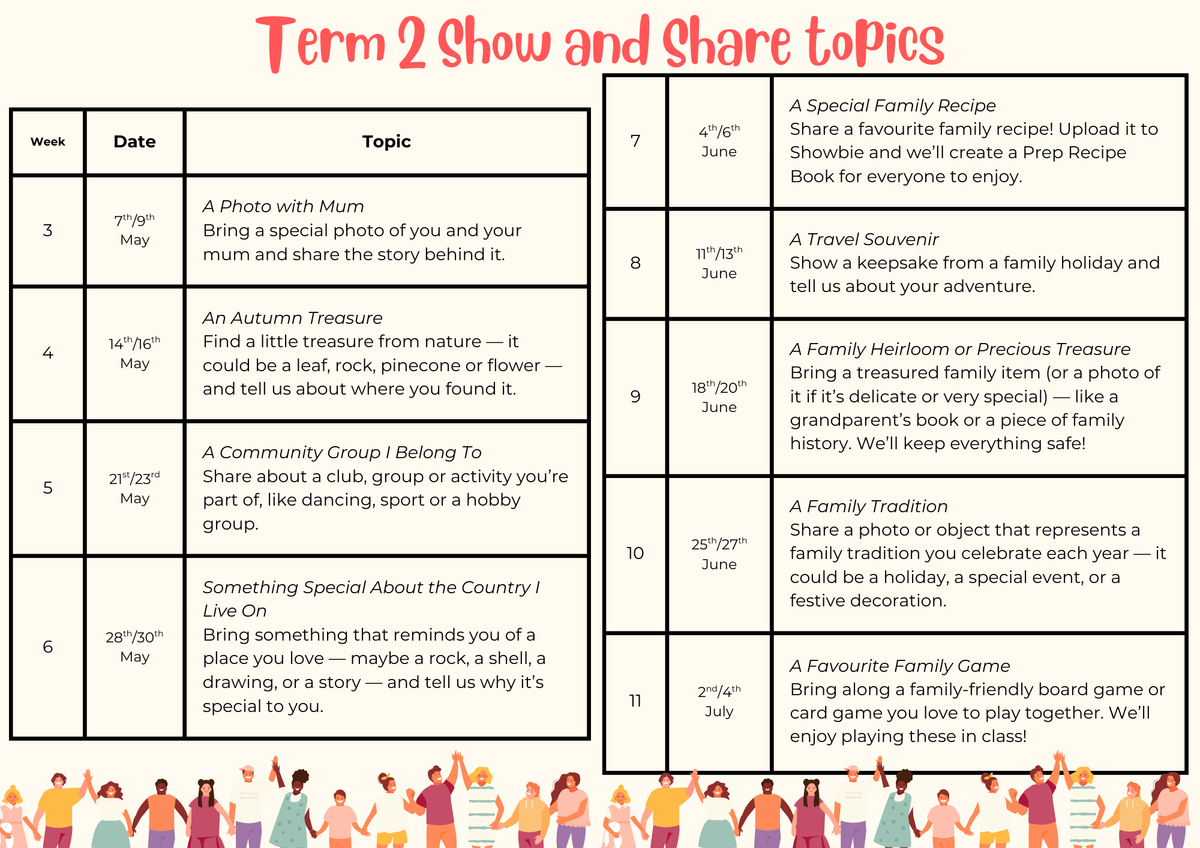

🎨 Specialist timetable
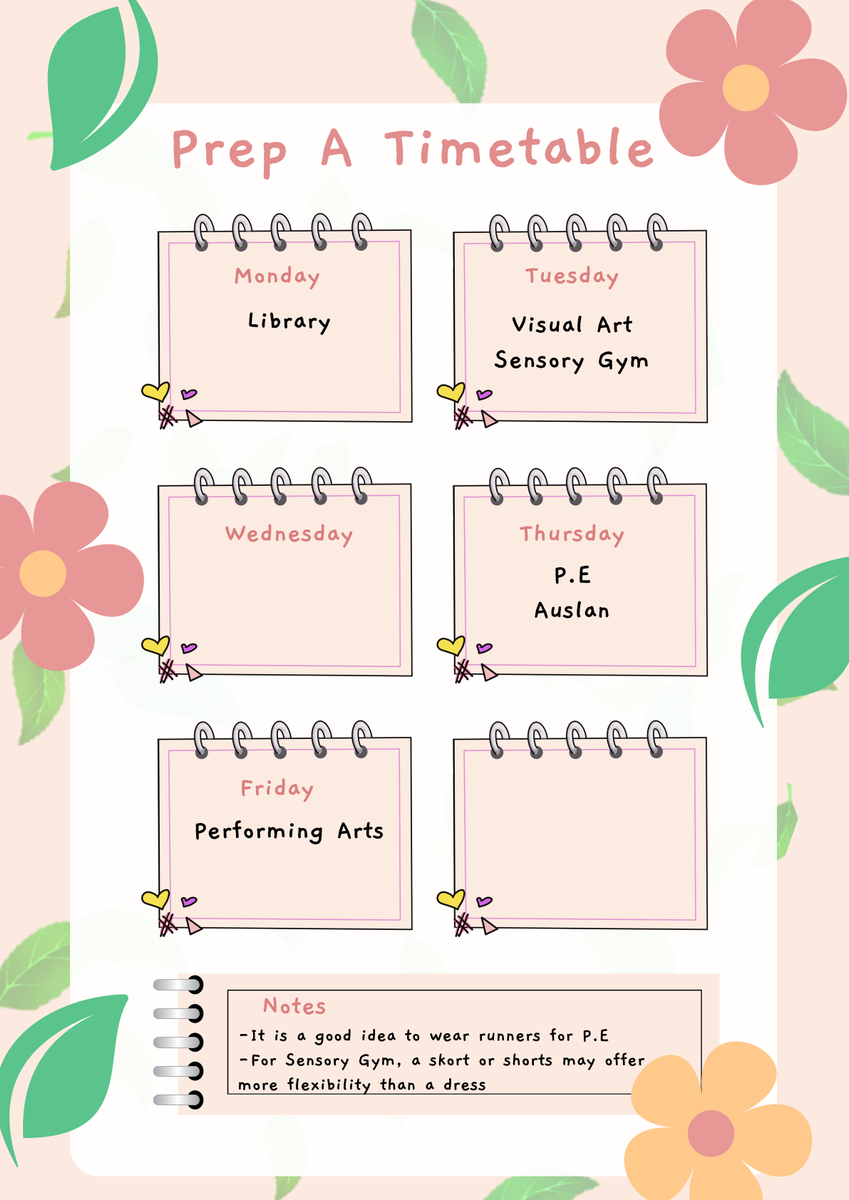
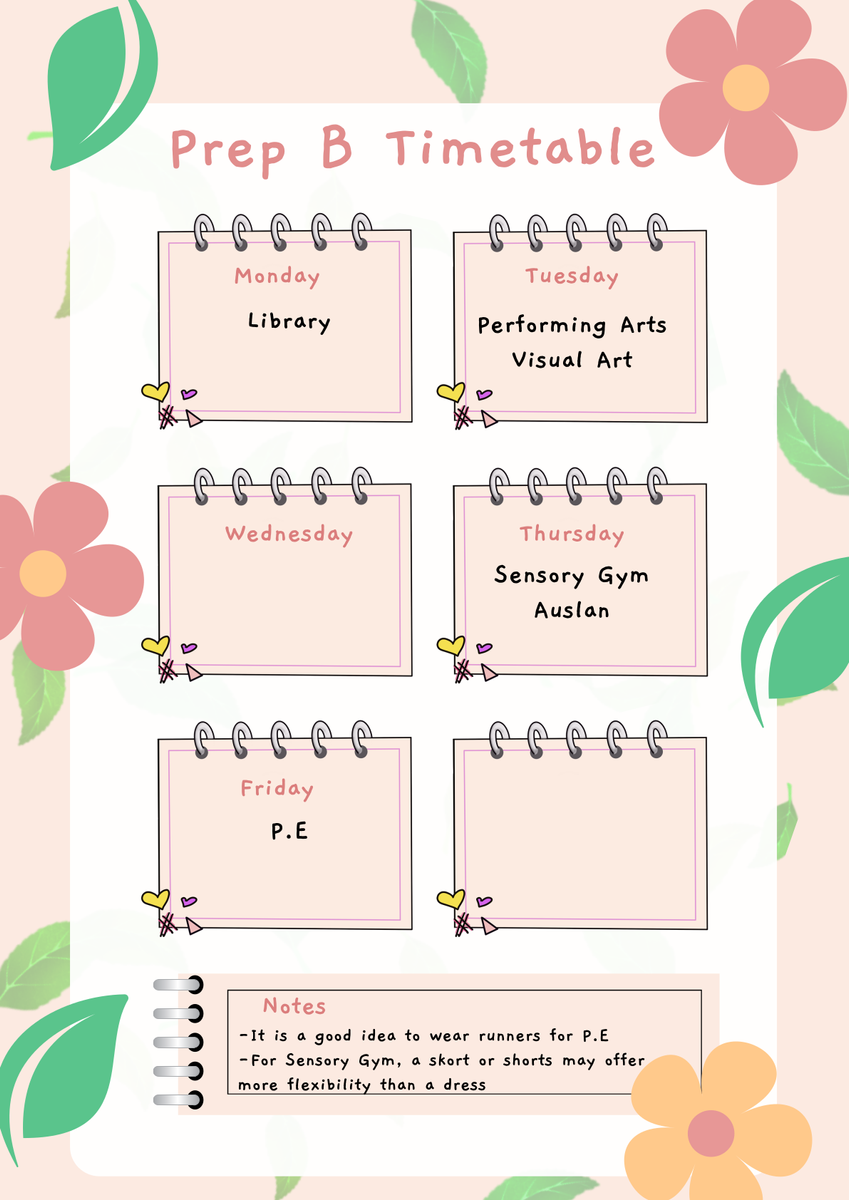
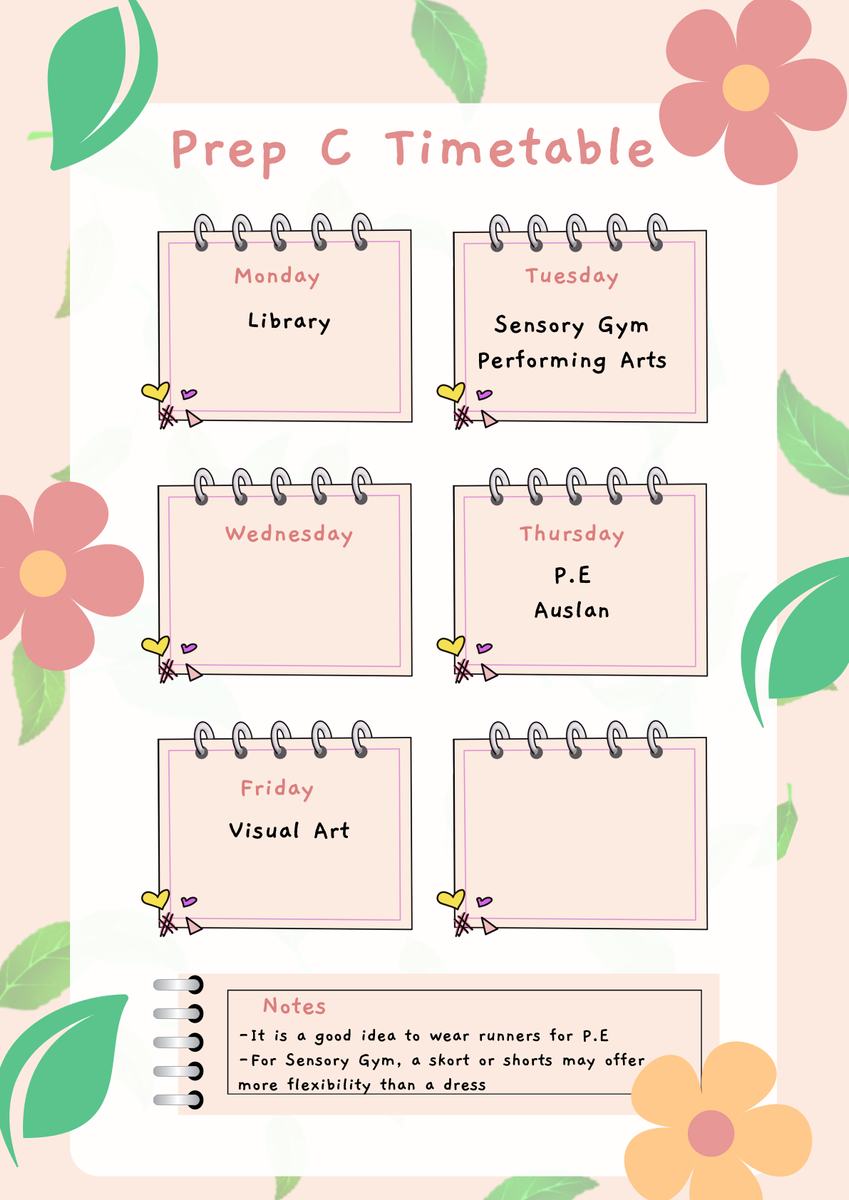



CURRICULUM
📚 Phonemic awareness: reading and phonics
We’re learning about the letter L as an initial sound (as in log) and then as a consonant cluster (as in glad). Students will explore the phoneme (the sound it makes), the grapheme (how its written with correct formation) and the matching cued articulation action.
In addition, students will practise reading and writing CVC and CVCC/CCVC words using all the short vowels.
We’ll also review our Heart Words: he, be, me, from and learn the words, look, book and are
What can you do at home?
-Help your child read the take-home book, decodable passages, or CVC word cards from their book pocket together. **Aim for fluency by the second day of reading.
-Enjoy bedtime stories with your child to build vocabulary and a love for reading.
-If you're interested in learning about Cued Articulation, you can watch this helpful video by Jane Passey (the founder), where she explains and demonstrates each sound: Cued Articulation with Jane Passey
-Work through the optional UFLI home practice pages if you’d like some extra phonics practise at home.
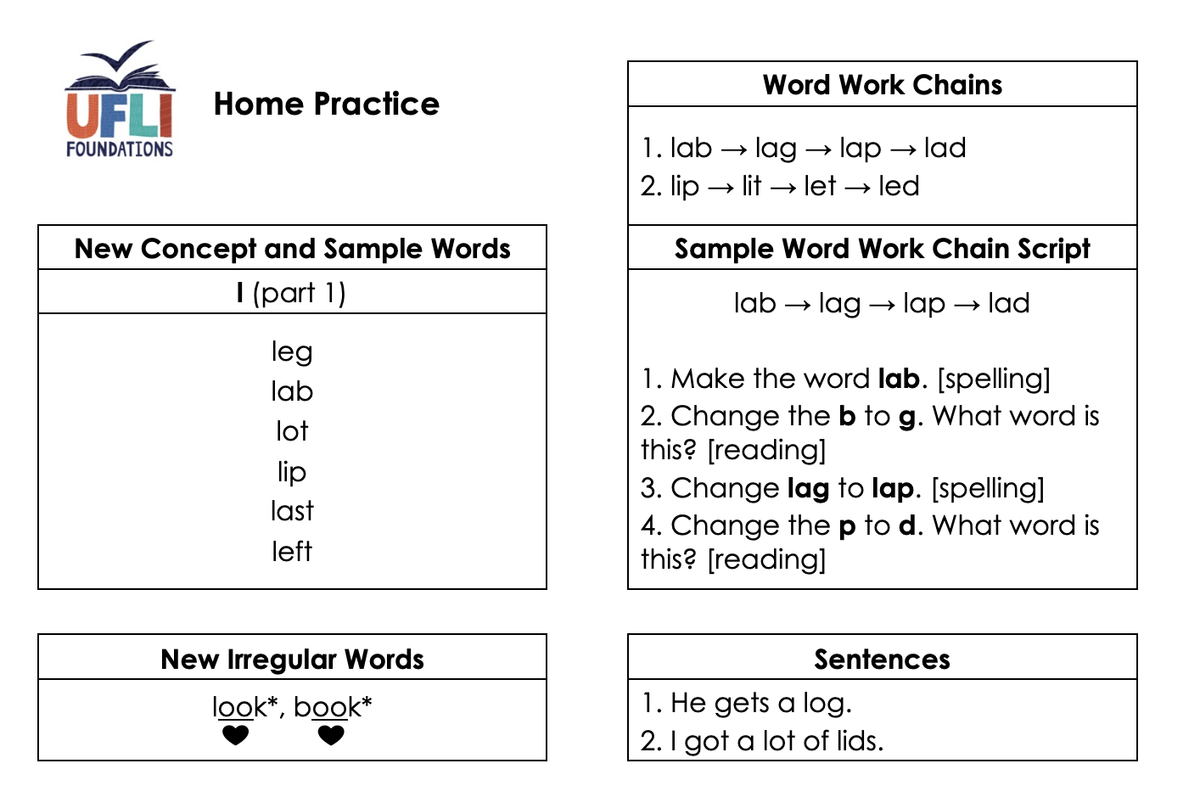
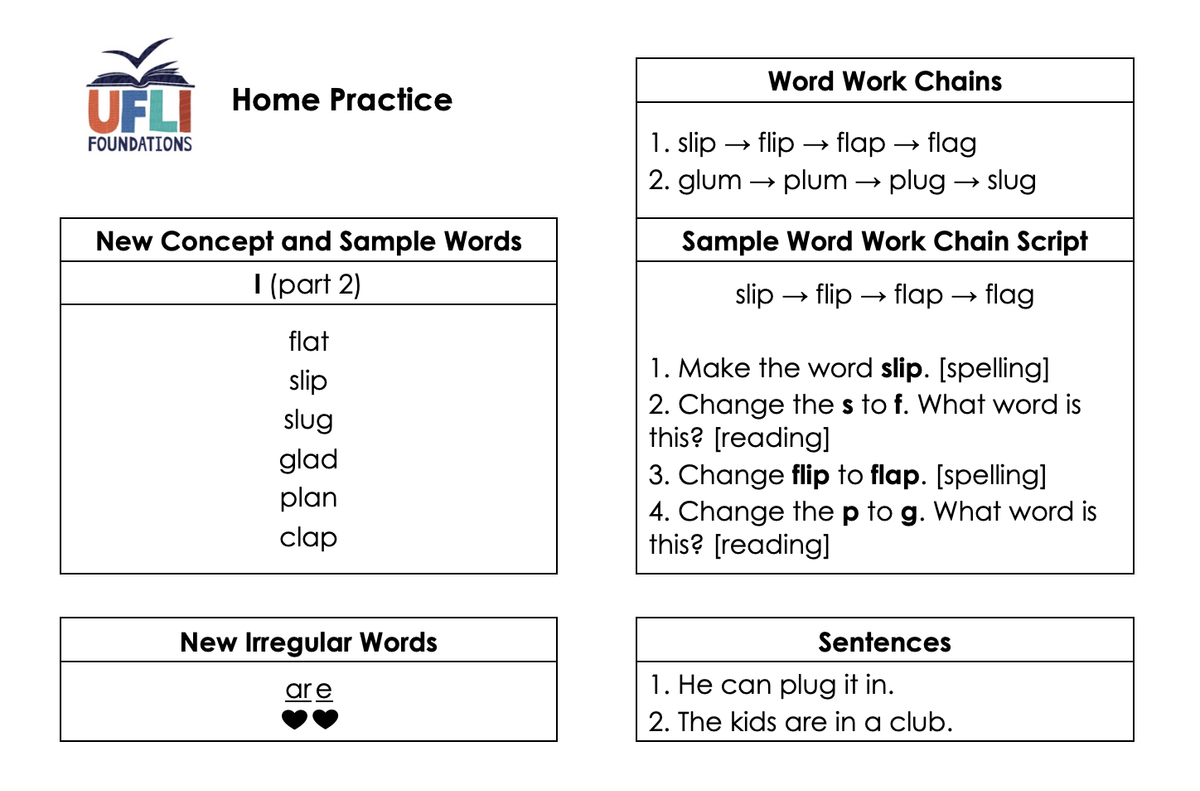


📝 Literature: reading responses and writing
This week, our Mentor Text is What Do You Call Your Grandma?, a beautiful story that celebrates the diversity of families by exploring the different names children use for their grandmothers around the world.
Students will reflect on their own families by thinking about what they call their grandma (or grandparent figure), and the special activities they enjoy together. They’ll also show their understanding of the story by considering what the characters in the book do with their grandparents.
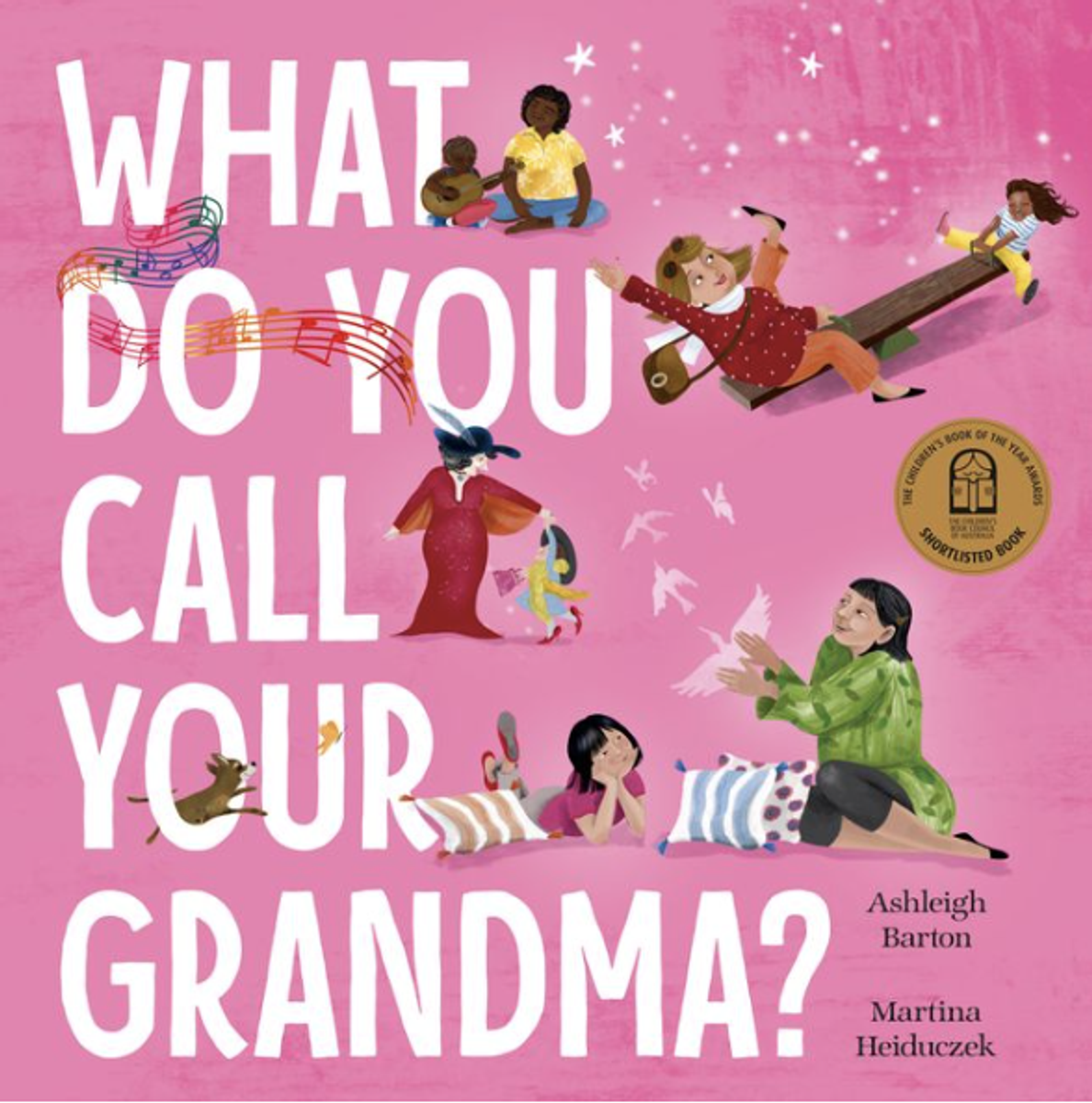

In Writing, students will continue to use the letters they’ve learned so far to write sentences inspired by picture prompts. This week, we’re also beginning to connect our writing experiences to our Mentor Text. We’ll be practising the correct formation of the letter L, while revising all the letters we’ve worked on throughout the year.
What can you do at home?
-Play with things that develop fine motor skills like lego, playdough, drawing and building blocks.
-Help your child develop their pencil grip.
-Encourage your child to write simple sentences about a picture in a book or something they see around them.E.g. “The cat is on the mat.”
(Letters/sounds we know: A, M, S, T , P, F, I, N, O, D, C, U, G, B, E, K, H, R and L)
-Help your child sound out simple words when writing, reminding them to use the letter sounds they’ve learned.
🔢 Maths
This week in Maths, we’re exploring an important concept called part-part-whole thinking. This is when we look at a whole number and break it into smaller parts — an essential foundation for developing additive thinking skills. Students will be learning to partition numbers to 5 and 10 into two parts, and then three parts. They will use a variety of hands on materials, like 5 frames, 10 frames, counters and unifix, to help build understanding.
What can you do at home?
-Use everyday objects like buttons, grapes, or Lego blocks to practise breaking numbers into parts. For example, “I have 5 grapes — how many are in this bowl and how many are in my hand?”
-Play simple number games like rolling a dice and seeing how many different ways you can make that number using two or three parts.
-Ask 'how many more?' questions during play or snack time. For example, “You have 3 crackers — how many more do you need to have 5?”
-Use puzzles or stacking toys to practise combining and separating groups of items.
🌏 CBL - Diversity
Our CBL content will be thoughtfully integrated into our Mentor Text sessions this week.
💻 Cyber Safety
In the lesson I Never Share my Password, students will learn about how passwords keep our profiles safe and why it is important to keep them secure.
💛 Wellbeing & School Wide Positive Behaviour (SWPBS)
Our SWPBS focus continues to be on the expectations of ‘Be Kind’, ‘Be Safe’, and ‘Be a Learner’. The students have been doing a wonderful job showing these positive behaviours around the school and have loved receiving tokens as recognition for their efforts. It’s been lovely to see how proud they are when they’re acknowledged for being kind friends, safe classmates, and enthusiastic learners.